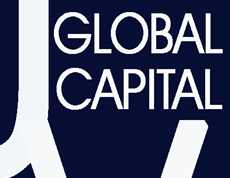As we enter a shortened week in the U.S., markets and policymakers will closely monitor a dense slate of economic indicators that together tell a story about growth, inflation, and technological innovation. At the heart of this week’s data lies the labor market. August’s Nonfarm Payrolls, unemployment rate, and wage growth will show whether the labor market continues its recent slowdown. Complementary reports of the ADP survey, JOLTS job openings, and Challenger layoffs will shed light on how resilient the U.S. workforce is as companies adapt to a high-inflation, high-interest-rate environment.
Persistent inflation remains a central concern. Core PCE the Federal Reserve’s preferred gauge rose to 2.9% year-over-year in July, above the Fed’s 2% target. While personal income and consumer spending remain strong, these inflationary pressures, coupled with renewed tariff concerns, could complicate monetary policy decisions in the months ahead. On the corporate front, earnings results from tech giants like Broadcom and Salesforce, alongside disappointing guidance from Nvidia, Dell, Super Micro, and Marvell, highlight the tech sector’s delicate balancing act between rapid growth and global demand uncertainty.
Yet, beyond the daily economic flows, a larger, strategic story is unfolding: the race for AI dominance and semiconductor independence, shaped by U.S. industrial policy and international competition. Under the Trump administration, clear regulatory priorities have emerged to favor domestic manufacturing, particularly in semiconductors a sector central to AI development. Intel’s recent deal, granting the U.S. federal government a minority stake in its foundry business, exemplifies this strategy. The move ensures that key chip-making capabilities remain under domestic control while promoting investment in advanced manufacturing technologies. Similarly, expansive tariffs on steel, aluminum, and other inputs are designed to bolster U.S.-based production, reducing reliance on foreign suppliers and securing supply chains for AI and other critical technologies.
These policies create a challenging but opportunity-rich environment for AI innovation. With the U.S. limiting China’s access to advanced chips, the AI ecosystem faces a bifurcation: domestic firms like Nvidia, Intel, and emerging AI startups must navigate geopolitical constraints, while Chinese firms are accelerating their own technological solutions. Alibaba’s creation of an AI chip designed to substitute for Nvidia’s GPUs underscores China’s determination to fill the void left by U.S. restrictions. The chip, compatible with Nvidia’s software, is designed to run AI inference tasks, demonstrating that both countries are investing heavily in the infrastructure of AI itself. Other Chinese firms, including MetaX and Cambricon, are similarly racing to produce high-memory AI chips capable of sophisticated model training, signaling an accelerating global AI arms race.
In this context, market reactions to corporate earnings take on an added layer of significance. Nvidia’s recent guidance tempered by softening Chinese demand is not just a reflection of standard revenue risk; it reflects the realignment of the global AI supply chain. Dell, Super Micro, and Marvell’s earnings highlight that hardware providers are directly exposed to these geopolitical shifts. Investors are beginning to price in the reality that AI is not merely a technology trend it is a strategic asset intertwined with national policy, tariffs, and global trade constraints.
The narrative emerging from these intertwined economic and technological developments is clear: AI is advancing, but its trajectory is increasingly shaped by national priorities and trade policy. U.S. measures to secure semiconductor supply chains, combined with strong domestic tech investment, create both friction and opportunity. While Chinese firms are racing to develop substitutes, the U.S. remains positioned to lead in next-generation AI technologies due to its regulatory backing, capital markets, and established technology ecosystem.
Looking ahead, the coming week’s economic data from labor market indicators to trade balances will provide context for corporate decisions and policy responses. Meanwhile, earnings reports in the tech sector will offer real-world evidence of how AI investments are paying off amid global constraints. For investors, policymakers, and technologists, one takeaway is clear: AI is no longer just a driver of corporate growth it is a central arena of strategic competition, with economic indicators, trade policies, and corporate earnings all narrating the same story.
In short, the AI revolution is underway, but it is now inseparable from the geopolitics of manufacturing, trade, and national security. Those who understand the alignment of economic data, government policy, and corporate innovation will be best positioned to anticipate the next phase of AI-driven growth.
sources:
Trump administration’s deal is structured to prevent Intel from selling foundry unit | TechCrunch
Exclusive | Alibaba Creates AI Chip to Help China Fill Nvidia Void – WSJ
Disclaimer: This content is provided for informational and educational purposes only and does not constitute investment advice, a recommendation, or an offer to buy or sell any security, commodity, or financial product. Any companies, securities, or financial instruments mentioned are presented as examples of market trends or innovation and are not investment recommendations. All opinions and market commentary expressed are current as of the date of publication and are subject to change without notice. This content may include speculative views, forward-looking statements, or projections, which are based on assumptions and publicly available information. Such statements are inherently uncertain and should not be relied upon to make investment decisions. Investing involves risk, including the possible loss of principal. Markets can be volatile, and individual investments may fluctuate in value. Past performance is not indicative of future results. Please consult a JV Global Capital qualified investment adviser to determine whether any strategy or investment is appropriate for your personal financial situation.






